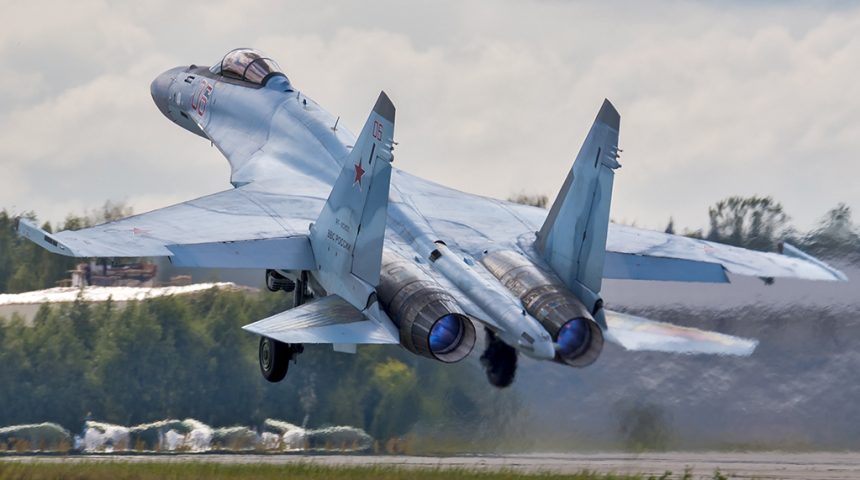The Su-35S aircraft are part of a major package that will also include air defence systems, missile systems and helicopters.
Iran will eventually receive Russian Su-35S Flanker-E jets as part of an agreement with Moscow, an Iranian parliamentarian told according to the Iranian semi-official Tasnim News Agency.
According to Shahriar Heidari, who is a member of the Iranian Parliament’s National Security and Foreign Policy Commission, the agreement also includes “a series of other military equipment from Russia, including air defense systems, missile systems and helicopters”. The delivery of the jets might take place as early as next March, the beginning of the next Iranian year.
Single seater, without canards, the Su-35S “Flanker E” is the 4++ generation variant of the Su-27 Flanker aircraft.
The multirole aircraft features thrust-vectoring, radar-absorbent paint, Irbis-E passive electronically scanned array radar, IRST (Infra-Red Search and Track), the Khibiny radar jamming system along with the ability to use some interesting weapons, including the ultra-long range R-37M air-to-air missile that could target HVAA (High Value Air Assets) such as AWACS and tanker aircraft.
Some of the fighters are expected to be based at the Islamic Republic of Iran Air Force (IRIAF) Tactical Air Base (TAB) 8, located in the city of Isfahan in central Iran, according to the Iranian media outlet.
The news does not come as a surprise: the possible sale has been discussed several times in the past years until, last September, Iranian media reported that Air Force chief Hamid Vahedi had said that the purchase of the Sukhoi Su-35 from Russia was “being considered” by the Iranian air force.
Targeted by stringent Western sanctions, Iran and Russia have boosted their cooperation in various key areas, including energy, trade and military; the most evident sign of the cooperation in the defense sector is the appearance of the Iranian-made Shahed-136 direct attack munitions (also called “kamizake drones”) in the Ukrainian war. Iran denied supplying drones to Russia, as this would require a UN Security Council approval based on the annexe to the 2015 resolution 2231 on Iran nuclear deal, that restricted ballistic missile activities and arms sales, but it later acknowledged the transfer, but said it came before the war in Ukraine.









